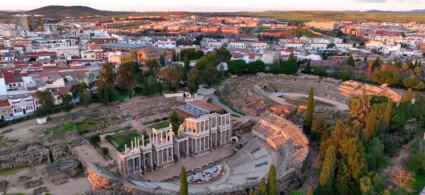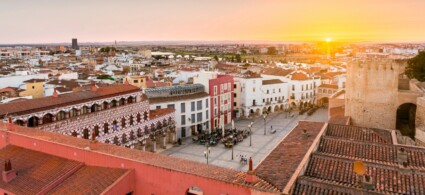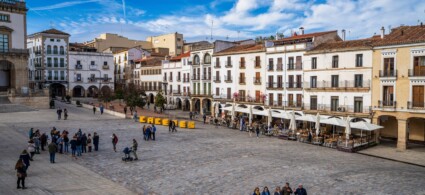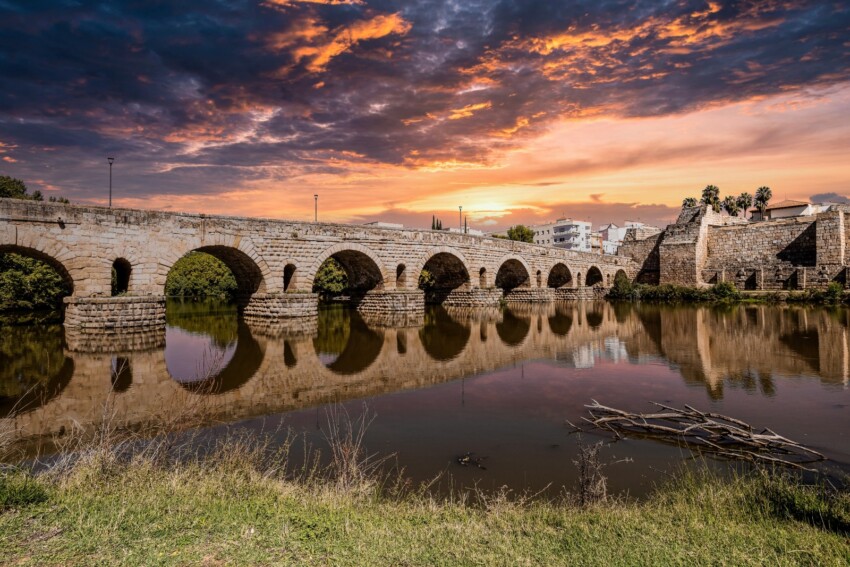

Desolate, arid and poor, Extremadura is all described in its name (from the Latin ‘terra extrema et dura’): a land of deserted spaces and endless fields, almost always uncultivated, that for centuries has had to struggle with rulers and drought. Cinderella of the Spanish economy and tourism, it is a region that holds magnificent surprises in store for those who leave the beaten track of mass tourism and approach a more authentic reality.
Sandwiched between Castile y Léon, the Madrid region, and Andalusia, and with its gaze turned towards that ocean it cannot reach, Extremadura is a destination for romantic souls in search of tranquillity and charm.
It should be explored at a slow pace, either on foot along the ancient Via de la Plata, a lesser-known hiking trail than the Camino de Santiago but no less fascinating, or by car driving up and down lonely roads where you may not meet anyone for hours.
Your eyes will feast on unusual and fascinating sights, such as black storks, cork oaks, ruined castles and lonely monasteries, while your palate will be delighted by the local gastronomic specialities, which include such unmissable delicacies as the Torta del Casar, considered one of the best cheeses in the world.
Madrid and Lisbon seem worlds away, but thanks to long-distance roads they can be reached in no time. Extremadura is there, at hand for all those who wish to discover it.
Poor in economy but not in places of interest, Extremadura is a magnificent region to visit, the ideal destination for those who don’t want to be dazzled by postcard images but want to delve deep into the secrets of a nation with splendid scenic and cultural attractions.
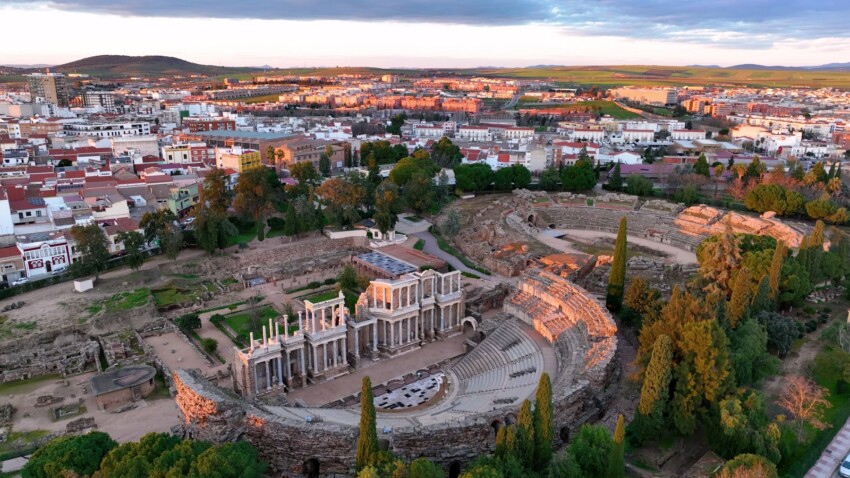
Founded by the Romans in 25 BC, Mérida is a jewel of ancient charm: crossed by the Guadiana River, it is the city with the highest number of ancient ruins.
Some of these are particularly impressive and will thrill even those who have already seen famous archaeological sites in Italy or Greece: the Roman bridge (the longest preserved to date), an ancient theatre, an amphitheatre, a stadium and the remains of three aqueducts.
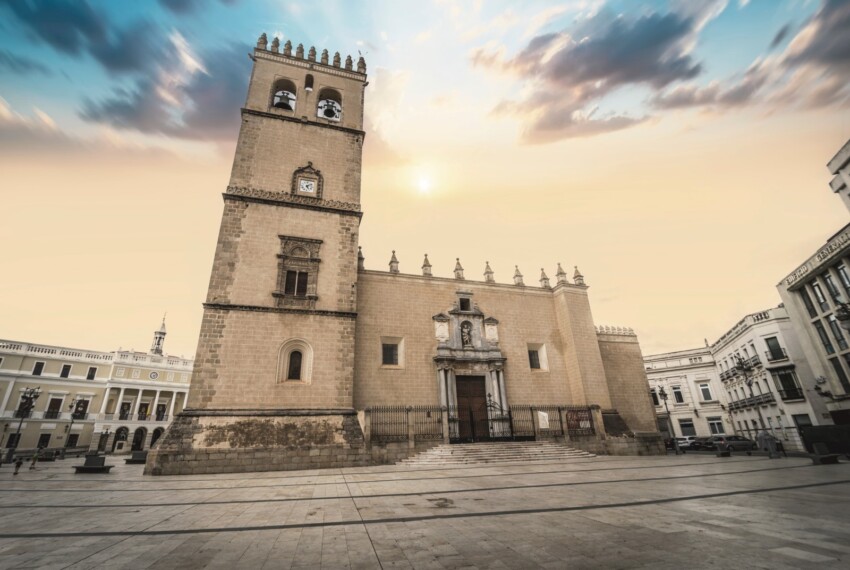
The largest Arab fortress in Spain is not in Andalusia as many believe but in Badajoz, a city unjustly snubbed by tourists.
In addition to this marvel, you can also admire a magnificent cathedral, a very modern building with a façade that changes colour with the reflections of light and an interesting museum of contemporary Spanish, Portuguese and Ibero-American art housed inside a former prison.
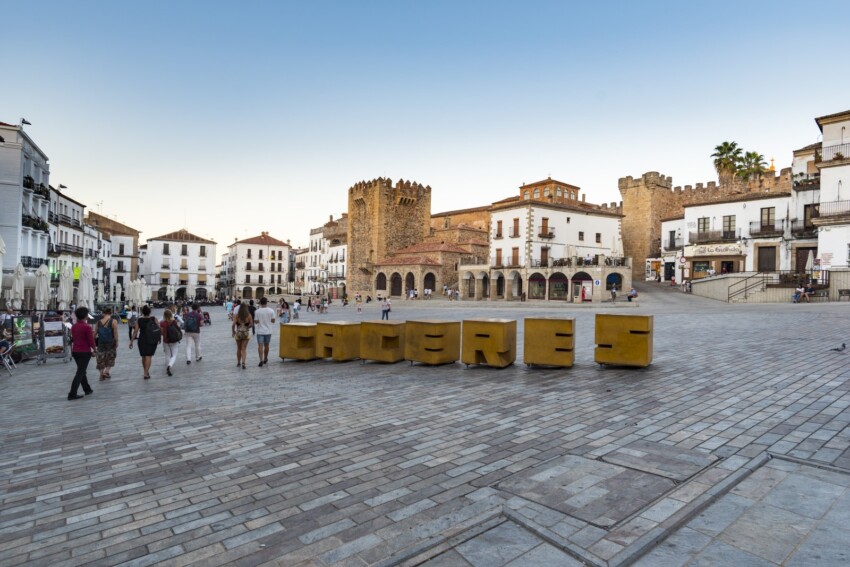
The Ciudad Monumental of Cáceres is a labyrinth of narrow streets and squares lined with elegant palaces once home to the city’s noble families; some of these stately homes now house interesting museums.
The best way to fall in love with Cáceres is to lose yourself in its winding alleys and let yourself be captivated by the unique charm of this city unknown to mass tourism and the goodness of the local dishes served in the pretty restaurants in the centre.
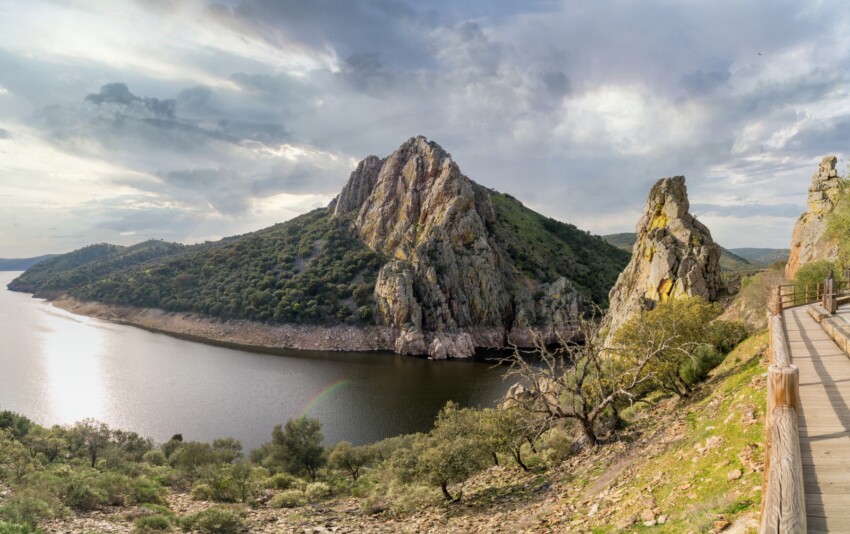
The 180 square kilometres of the Monfragüe National Park are home to more than 75 % of the protected bird species in Spain, including black storks, griffon vultures, monk vultures and Iberian imperial eagles.
This birdwatching paradise is also an ideal destination for trekkers: the park is a spectacular expanse of hills criss-crossed by hiking trails for all levels. Walk at a leisurely pace in search of the park’s most beautiful vantage points, from which you can enjoy breathtaking views.
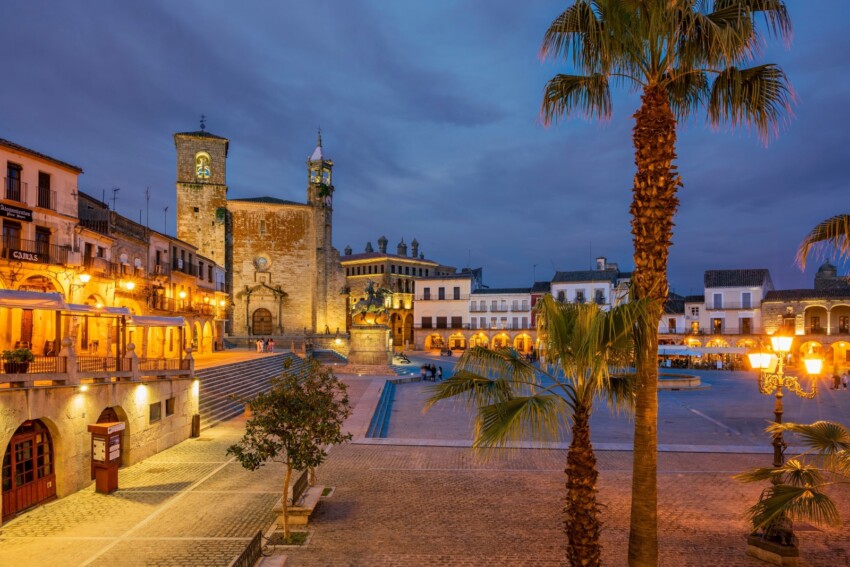
The sea is hundreds of kilometres away, yet Trujillo owes its fame to the epic exploits of the conquistadors who brought riches with them: among them, Francisco Pizzarro, the ruthless conqueror of Peru who was born in this remote Extremaduran town.
The historic centre is a riot of elaborately decorated palaces, Baroque churches, lush gardens and splendid Moorish-era cisterns.
In the following map you can see the location of the main places of interest mentioned in this article.
For sleeping in Extremadura, the best alternative is Mèrida. The town is located a reasonable distance from both Badajoz and Caceres, making it the perfect base for day trips to explore the surroundings. In Merida, there are several places to stay, including some hotels and several flats and bed and breakfasts.
Choose to stay in the historic centre as this is the area with the most attractions, but at the same time watch out for parking! If you have a rental car, staying in the centre can be tricky, so it is best to find out if the establishment you are choosing has parking or a garage agreement.
Extremadura is one of the westernmost regions of Spain, bordering Portugal. To get to Extremadura the best thing to do is to land in Madrid and rent a car, then head west. Alternatively, consider landing at Seville airport, this time heading north.
An alternative would be to take advantage of Lisbon airport: from there to Badajoz takes about 2½ hours by car or three hours by public transport.
The autonomous community of Extremadura is located in south-western Spain and is landlocked. It borders Portugal to the west and other Spanish regions (Andalusia, Castile-La Mancha, Castile y Léon) to the south, east and north. It should not be confused with the region of the same name in Portugal.
From an administrative point of view, Extremadura is divided into two provinces, which are the largest but among the least populated in Spain: Cáceres and Badajoz. The capital of the region is Mérida.
Extremadura enjoys a Mediterranean climate with the exception of some areas with a continental climate. Throughout the region, summers are hot and dry.
